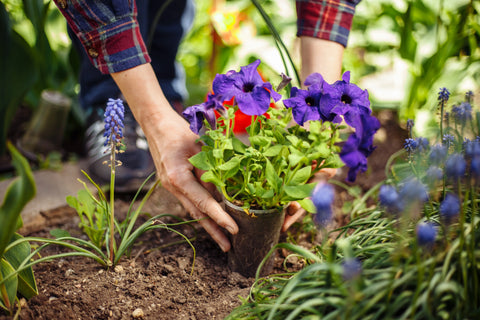Care Guide Ponytail Palm
FOCAL SPECIMEN
Looking for a unique and beautiful house plant? Look no further than the ponytail palm! With its signature cascading "ponytail" of greenery, this bonsai palm is sure to add some life and interest to your indoor space. easy to care for, the ponytail palm is the perfect choice for busy people who still want to enjoy the benefits of having a green thumb. Ponytail Palm can also be used as a focal point. Place it in a main entrance or a living room, it simply demands attention, this rare and exotic plant will demand attention from everyone that visits.
WATER MANAGEMENT PONYTAIL PALM - Ponytail Palm do enjoy frequent watering, plants purchased for indoors use can be watered less frequent, however frequency of watering will depend on the size of the plant, humidity levels and rate of growth. One of the most common mistakes in the care of indoor plants is overwatering, indoor plants are far more tolerant to underwatering than overwatering, Improper watering can result in fungal issues and root rot. It is recommended to monitor your houseplants and water them when they need it, rather than on a schedule. When watering plants the objective is to maintain the soil moist but never soggy, a moisture meter is a great tool to utilize to reduce the guesswork, We recommend to sample the top soil an inch deep every 3-4 days, if you notice is still moist hold off on watering until it dries further, since most plants water needs may be different this is a good way to determine each individual plant water requirements.
Water Recommendations base on pot size, we suggest to utilize a soil probe initially to determine humidity levels and when to water.
6 inch Pot plants, every 5-7 Days, 10-12 inch Pot plants, every 7-12 days
LIGHT - Ponytail Palm enjoy bright indirect light, they can adapt to lower lighting conditions, however if bright light is available it is optimal and will encourage a higher rate of growth. If outdoors it should remain in shaded areas, direct sun exposure will scorch its delicate leaves. You can place the Ponytail Palm near a window where the plant can receive the brightest available light, east, south, and west facing windows are the best options, we recommend to rotate the plant occasionally, this will allow the plant to receive bright light from different angles, it can minimize leaf drops from within the canopy and allow the plant to maintain even healthy growth all year round.
HUMIDITY - Regular Misting is recommended, Many of our houseplants come from the tropics, where humidity is very high, generally the air in our homes is dry, occasional misting houseplants is a very simple and effective way to boost humidity, an easy solution to the risk of overwatering your plants. Always pay attention to the color and texture of the leaves on your plant. Generally Plants with brown or dry leaf tips will benefit from regular misting to keep the plant happy and thriving, preferably in the mornings to allow the foliage to completely dry out during the day.
PLACEMENT AND TEMPERATURE - Selecting the right location for your plant indoors or outdoors is very important, micro climates can affect the health of the plant, make sure the plant does not receive air draft from near by AC/Heating vents, or warm air if close to a freezer, the foliage will dehydrate faster than it can hydrate from moisture in the air or in the soil, eventually turning brown and dropping, when plants are properly watered and care for and still display signs of wilting or seem sad it may help to relocate the plant to a different area for brighter indirect light. Please note most tropical plants are from the tropics, proper moisture is required for their health and survival, we highly recommend to bring your tropical plants indoors when temperatures are expected below 45s during winter months or above 90 during summer months, extreme weather can severely damage the plant.
FERTILIZING – No need to fertilize right away, We fertilize our plants during the production phase with slow release fertilizer which can last an additional 2-3 months supplying residual nutrients to the plant. Once you do decide to fertilize You may use a fertilizer formulated for interior plants, preferably a slow release fertilizer 180 days duration, fertilize during spring or fall base on label instructions.
CLEANING, REGULAR MAINTENANCE - Ponytail Palm tree leaves are large elongated stemming from individual fronds, exercise care when cleaning since leaves are very tender. Simply add a few drops of dish soil to a cup of water, wet a soft cloth and manually wipe off dust off the leaves, is a simple solution that is inexpensive and works well without damaging the plant.


